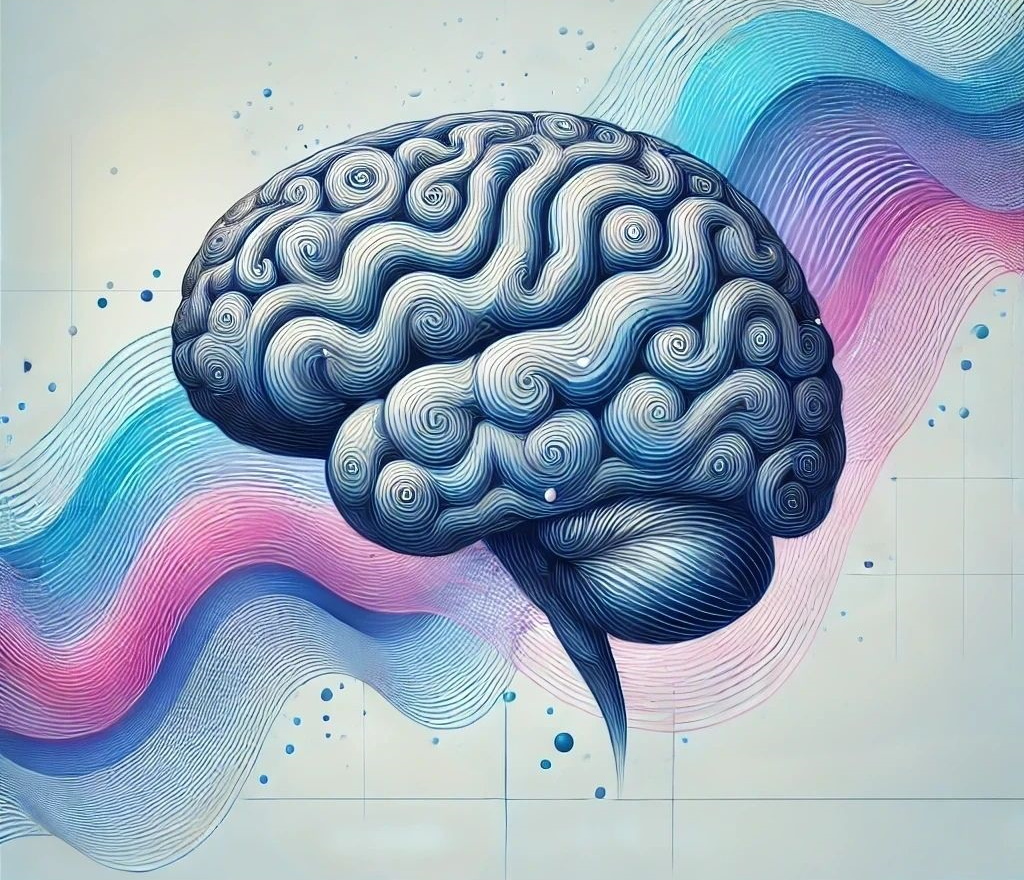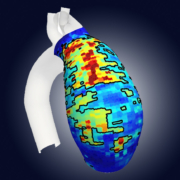What if the key to cerebral health lay in its tiniest pulsations?
The brain fascinates in its extraordinary ability to generate our thoughts, our emotions and govern our actions. For centuries, extensive research has been conducted into the complex and mysterious workings of our brains, in the fields of medicine, biology and neuroscience. Today, this research has become increasingly cross-disciplinary, sometimes even crossing paths with unexpected disciplines such as physics and mathematics.
This is the case for the work of Alexandra Vallet, associate professor at the Mines Saint-Étienne Engineering and Health Center, which covers the fields of biophysics, neurology and fluid mechanics. The researcher has opted for a unique approach, taking into consideration the physics of the infinitely large to the physics of the infinitely small, as she seeks to establish a link between intracranial pulsatility and neurodegenerative pathologies. She is delving into the complex workings beneath our skull.
From dark matter to gray matter
Alexandra Vallet was not necessarily destined for a career in human biology. After writing a thesis on astrophysics in which she attempted to reproduce the extreme conditions of stars in a laboratory setting using extremely powerful lasers, she was recruited by the CEA. Her role was to study photon transport in hot plasmas. “This highly confidential work using cutting-edge technology was fascinating but rather isolating. I was drawn to academic research as it involved working with peers and communication with the general public”, she says.
As she was reconsidering her career path, she met Éric Schmidt, a neurosurgeon from Toulouse University Hospital. He opened up some fascinating possibilities: if Alexandra Vallet applied her knowledge of physics to the brain, it could help to better understand its normal and pathological aging. And why not help to improve the care of the elderly suffering from neurodegenerative diseases? This marked a turning point. The young researcher left her job and enrolled in a postdoctoral program at Toulouse Neuro Imaging Center (ToNIC), in partnership with the Toulouse Institute of Fluid Mechanics (IMFT), to spend most of her time at Toulouse University Hospital learning about the biomechanics of the brain alongside the neurosurgeon. She was also guided on this new path by Sylvie Lorthois, who is herself a cross-disciplinary researcher at IMFT, specializing in the biomechanics of the brain.
She works on establishing a link between the mechanical and elastic properties of the brain and their level of fragility, using a cohort of elderly patients. Following this research, Alexandra Vallet’s conclusions confirmed this physical correlation: the more rigid the brain, the more vulnerable the person is to external mechanical, chemical or biological stress.
The workings of an organ
When the brain becomes rigid, this can lead to complications as it disturbs the system of intracranial pulsations, which is a natural phenomenon linked to heartbeats. “Each heartbeat causes a slight change in the volume of blood in the brain, compressing and distorting cerebral tissue”, explains the researcher. The generation of pressure gradients causes spinal fluid to flow from the brain to the spinal cord, outside the intracranial space. Much like the tides, each pulsation keeps this liquid in constant motion in the spaces around the brain and ventricles, and also in the perivascular spaces that surround the vessels inside the brain itself!
With age, this system loses its suppleness and the brain has more difficulty adapting to changes in volume and pressure. The accumulation of pathologies also leads to changes in the mechanical properties of tissues – blood vessel walls typically becoming more rigid – atrophy, or neurotoxic protein deposits (such as beta amyloid), which make the whole system increasingly rigid.
All these factors impact intracranial pulsatility, lead to changes in cerebrospinal fluid flow, and distortion of brain tissue (especially neurons), with potentially harmful consequences for the individual. Understanding the dynamics of this intracranial pulsatility is central to Alexandra Vallet’s research.
With each heartbeat, my brain cleanses itself
So why are these dynamics so important? The circulation of cerebrospinal fluid is crucial to the health of the brain: this is the glymphatic system. Each vascular pulsation mechanically sends cerebrospinal fluid into the spaces between blood vessels and brain cells, gathering toxins which will then be eliminated. Over the past ten years, numerous publications have demonstrated that intracranial pulsatility significantly improves the efficiency of cerebral waste transport. “The perivascular spaces are like freeways”, says Alexandra Vallet, “the more efficient the pulsations, the faster the brain is cleansed.”
This waste removal is essential, especially in preventing neurodegenerative diseases. As an example, for a very long time, research focused on the excessive production of beta amyloids as the main cause of Alzheimer’s disease, before considering the possibility of poor elimination of these proteins. If the glymphatic system is altered, beta amyloid clearance is impacted too. For the researcher, the implications are clear: “If we manage to improve the functioning of the glymphatic system, this could present new opportunities in terms of treatment to either slow down or prevent these illnesses.”
Nocturnal clean-up
In fact, the heartbeat is not the only factor that influences intracranial pulsatility. The respiratory cycle, which changes thoracic pressure, has a direct impact on cerebrospinal fluid oscillations. Similarly, active contractions and dilations of muscles in the vascular walls result in slow intracerebral pulsatility. During sleep, these slow, so-called ‘active’ pulsations intensify. At the same time, significant fluctuations in blood vessel diameter and cerebrospinal fluid waves are observed, suggesting that toxins are better evacuated. Imaging studies in mice and humans confirm that the glymphatic system is more efficient during sleep than when individuals are awake.
Fascinated by the link between sleep and brain health, Alexandra Vallet decided, after two years’ working with Éric Schmidt, to join a team of biologists and mathematicians from the University of Oslo, Norway, to work on this topic. From 2020 to 2023, she will be putting all her expertise as a physicist into equating, modeling and simulating the impact of these active pulsations on cerebrospinal fluid flow rates.
The researcher is taking crash courses in brain physiology, and learning to communicate with experts from different backgrounds, who don’t always share the same vocabulary. “I’ve been lucky enough to meet people who are interested in my approach, and we’ve learned a lot from each other,” she admits. “You can’t be an expert on everything, so you have to work together to progress. Of course, it takes time and effort, but the goals are ambitious and totally worthwhile.”
‘An ideal environment’
Considerable progress is being made in understanding the underlying processes of the glymphatic system thanks to this modeling work. But there are still a number of questions left unanswered, such as why does this system work better in certain conditions than others? Alexandra Vallet is now back conducting her research in France and working at Mines Saint-Étienne. “Since the brain cleanses itself more efficiently overnight, we can assume that improving the quality of nocturnal pulsations could be a possible way to slow down neurodegenerative disorders”, she says.
To demonstrate this physical link between pulsations during sleep, the efficiency of brain cleansing, and the long-term impact on the evolution of neurodegenerative diseases, the researcher is working on an ambitious project that she will soon submit for an ERC grant. “Large sums of money are at stake, so the project has to be well-established. The Engineering and Health Center offers the perfect cross-disciplinary conditions for this kind of research: for recruiting patients, using cutting-edge equipment such as MRI, and collaborating with specialists,” she enthuses. The researcher is also in direct contact with a sleep expert. “There is a lot of interest in this project. So far, I’ve had nothing but positive responses for new partnerships!”, she adds. Alexandra Vallet continues to work with Éric Schmidt and Sylvie Lorthois, on her exploration of the brain’s mysteries. Her goal is to succeed in slowing down, or maybe even preventing, the symptoms of neurodegenerative diseases.






